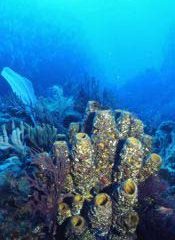Eddies appear in the ocean like in the atmosphere. Atmospheric eddies are short-lived, extremely speedy, and often very hazardous. Oceanic eddies are slower and can be observed only with the use of special equipment, but these eddies gently mixing ocean waters affect the climate in general.
For more than ten years specialists from the Pacific Institute of Oceanology in Vladivostok have observed the oceanic eddies formed at the confluence of two largest undercurrents in the west of the Pacif

Bleak forecast for sea level in 2100.
Sea level could rise by up to 30 centimetres over the next century, a new estimate predicts. That’s almost twice as much as the Intergovernmental Panel on Climate Change (IPCC) projected last year.
“My grandchildren will almost certainly be affected,” says Mark Meier of the University of Colorado, Boulder, who made the revised estimate. Such a rise could push shorelines back by 30 metres, he said, flooding coasts and submerging islands.

Conservation-oriented parks and reserves are fairly common on land, but comparatively few marine regions receive protection from human activities. This situation has, for the most part, elicited little concern, owing to the widely held belief that the large geographic ranges of most marine species would ensure their survival. But new research on restricted-range marine life—that is, species limited to small areas—challenges that idea, identifying 10 regions where further damage to coral reefs could l

Reptile history reveals daring escape from Madagascar
Land-lubber chameleons navigated the oceans to spread around the world. Stowed away on tree rafts, the animals were ferried to distant shores, new research suggests 1 .
Chameleons aren’t good swimmers: their mitten-like feet are made to grasp twigs and trees. Yet the intrepid animals charted the seas several times in the past 26 million years, say Chris Raxworthy of the American Museum of Natural History i

A supernova may have caused mass extinction two million years ago.
The explosion of a dying star could have ended much of marine life on Earth two million years ago. The supernova could have strafed the Earth’s atmosphere with cosmic rays, severely damaging the ozone layer and exposing living organisms to high levels of the Sun’s hazardous ultraviolet rays, US researchers propose 1 .
This idea dates back to the 1950s, but now Narciso Benítez of Johns Hopkins

Envisat, whose launch is scheduled end of February 2002, will tirelessly sweep the Earth`s surface and atmosphere, using a suite of ten different scientific instruments.
Over a 35-day cycle, the satellite`s orbit will cover the entire planet, and then start all over again. Two thirds of the time it will be over water. Because of the sheer size of the oceanic currents, the complexity of thermal exchanges, and ocean-atmosphere coupling, the ocean is a crucial factor in explaining the w